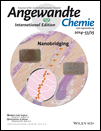Design and Synthesis of Copper–Cobalt Catalysts for the Selective Conversion of Synthesis Gas to Ethanol and Higher Alcohols†
This work was supported by the Center for Atomic-Level Catalyst Design, an Energy Frontier Research Center funded by the U.S. Department of Energy, Office of Science, Office of Basic Energy Sciences under Award Number DE-SC0001058. The authors acknowledge H. Meeldijk, G. Wang and M. Versluijs (UU) for STEM/EDX, UV/Vis and in situ XRD and SEM/EDX measurements and J. P. Holgado (ICMS-CSIC) for XPS experiments.
Graphical Abstract
Coupling DFT simulations, microkinetic modeling and synthesis tools allowed the development of supported CuCo bimetallic nanoparticles as highly efficient catalysts for the selective conversion of synthesis gas (CO+H2) into ethanol and longer-chain alcohols. As predicted by theory, maximizing the contribution from mixed Cu–Co sites, while preventing Cu phase segregation, results in superior yields to high alcohols.
Abstract
Combining quantum-mechanical simulations and synthesis tools allows the design of highly efficient CuCo/MoOx catalysts for the selective conversion of synthesis gas (CO+H2) into ethanol and higher alcohols, which are of eminent interest for the production of platform chemicals from non-petroleum feedstocks. Density functional theory calculations coupled to microkinetic models identify mixed Cu–Co alloy sites, at Co-enriched surfaces, as ideal for the selective production of long-chain alcohols. Accordingly, a versatile synthesis route is developed based on metal nanoparticle exsolution from a molybdate precursor compound whose crystalline structure isomorphically accommodates Cu2+ and Co2+ cations in a wide range of compositions. As revealed by energy-dispersive X-ray nanospectroscopy and temperature-resolved X-ray diffraction, superior mixing of Cu and Co species promotes formation of CuCo alloy nanocrystals after activation, leading to two orders of magnitude higher yield to high alcohols than a benchmark CuCoCr catalyst. Substantiating simulations, the yield to high alcohols is maximized in parallel to the CuCo alloy contribution, for Co-rich surface compositions, for which Cu phase segregation is prevented.





